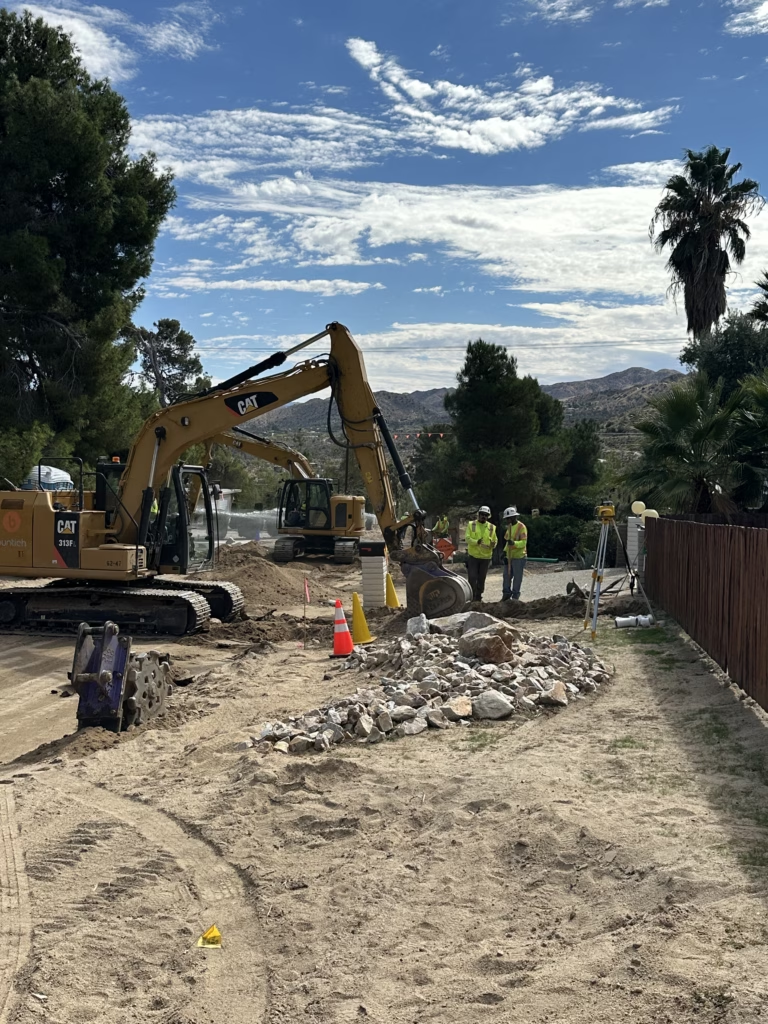Keep Funds Flowing: SRFs power critical sewer expansion in high desert
October 22, 2025

AWWA Articles
Keep Funds Flowing: SRFs power critical sewer expansion in high desert
The Hi-Desert Water District in southern California is demonstrating how strategic advocacy and governmental funding can transform essential infrastructure.
With a $103 million grant from Clean Water State Revolving Fund (SRF), the district is launching the second phase of its ambitious sewer project — laying 33 miles of pipe and connecting nearly 2,000 properties in Yucca Valley that currently rely on septic systems.
This funding was more than a boost; it was critical to the continuation of the project.

“This project simply wouldn’t be possible without this funding,” said Jennifer Cusack, who leads communications and legislative outreach for the district, which incurred $145 million in debt in the first phase of the project. “We’re a small, rural community, and this grant allows us to protect our water supply and serve our residents without pushing the financial burden onto them.”
Without the SRF, the cost of sewer connection would have been prohibitively high for residents, estimated at $36,000 per property. The SRF brings the cost of connection to about $5,000 per property owner, making it more feasible. By bringing homeowners onto the sewer system, the district is protecting the region’s groundwater from nitrate contamination that is linked to widespread septic use.
SRFs and other federal infrastructure programs like the loans under the Water Infrastructure Finance and Innovation Act (WIFIA) are currently facing cuts in the U.S. Congress. American Water Works Association is advocating to maintain funding for these critical programs, which marry federal investment with local responsibility.
“It is important that the federal government maintain or expand water infrastructure funding,” Cusack said. “Access to funding is critical to ensure water service and wastewater treatment services are affordable. These are one-time investments in infrastructure that strengthen our rural communities.”
In her role at the district, Cusack dedicates considerable energy toward advocacy for issues such as this. She provides weekly updates to the public on construction progress, impacts, and available funding support for homeowners. For this grant specifically, Cusack and her colleagues actively engaged with state officials, wrote letters, attended meetings, and advocated for an exception to the SRF’s $50 million per-project cap. (They succeeded.)
“We’re geographically isolated, and we’ve learned that we have to be our own advocates,” she said. That means building relationships with the community and with field representatives of their elected officials, inviting them for facility tours, and communicating often about projects and their impacts.
“We have to communicate, to tell our story,” she said. “For small water districts and rural communities, it can be intimidating to communicate with D.C. or the state, but it is very important to tell our stories about infrastructure and the water supply needs.”
They have also found partnerships — with entities like the Mojave Water Agency and the Community Water System Alliance — helpful in giving a voice to the issues they face as a small agency.
“Projects like this take years to plan and deliver,” Cusack said. “Planning dollars are important to help with the feasibility studies, environmental reviews, and preliminary and final designs.”
Has your utility benefited from federal infrastructure funding? If AWWA can feature your project in its advocacy efforts, please fill out this form.
Advertisement